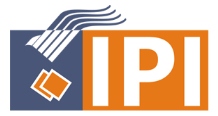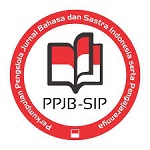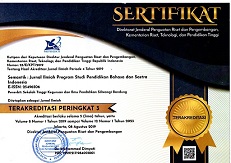PERUNDUNGAN SIBER (CYBERBULLYING) BERMUATAN PENISTAAN AGAMA DI MEDIA SOSIAL YANG BERDAMPAK HUKUM: KAJIAN LINGUISTIK FORENSIK
DOI:
https://doi.org/10.22460/semantik.v11i1.p17-32Keywords:
cyberbullying, blasphemy, speech acts, forensic linguisticsAbstract
Recently in Indonesia, there have been many cyberbullying containing blasphemy on social media such as what was done by Joseph Paul Zhang and M. Kece. Of course, it can cause legal implications if there are other peoples who feel humiliated. This research aims to (1) analyze illocutionary speech acts of cyberbullying containing blasphemy on social media, (2) reveal the legal impact of the utterance cyberbullying containing blasphemy, and (3) determine the characteristics of cyberbullying containing blasphemy. The method of this research is qualitative with forensic linguistic approach. The data of the research were collected from the copies of court verdict. Based on the analysis, the illocutionary speech act by defendants includes; expressive (hate speech, humiliation), directive (insulting), and assertive (lies). The legal impact of cyberbullying containing blasphemy carried out by the defendants on social media can be charged based on the Law of the Republic Indonesian Article 28 paragraph (2) Law Number 19 of 2016 about Information and Electronic Transactions (the ITE Law). The characteristic of cyberbullying containing blasphemy on social media is the use of harsh words, insults, and blasphemy against religious group, God, Prophets, the holy scriptures/verse, and other religious symbols.References
Adiyanti, M. G., Nugraheni, A. A., Yuliawanti, R., Ragasukmasuci, L. G., & Maharani, M. (2020). Emotion regulation and empathy as mediators of self-esteem and friendship quality in predicting cyberbullying tendency in Javanese-Indonesian adolescents. International Journal of Adolescence and Youth, 25(1), 251–263.
Alfiasari, Z. M. (2018). Perilaku cyberbullying pada remaja dan kaitannya dengan kontrol diri dan komunikasi orang tua. Jurnal Ilmu Keluarga Dan Konsumen, 11(2), 145–156.
Austin, J. L. (1962). How do to things with words. Cambridge: Harvard University Press.
Bachari, A. D. (2020). Pembuktian pidana penyebaran berita bohong dalam sistem peradilan pidana di indonesia. Jurnal Membaca, 5(2), 93–104.
Bakar, H. S. A. (2015). The emergence themes of cyberbullying among adolescences. International Journal of Adolescence and Youth, 20(4), 393–406.
Belsey, B. (2005). Cyber Bullying. Retrieved from http://www.cyberbullying.ca/
Campbell, M. A. (2005). Cyber bullying: An old problem in a new guise? Autralian Journal of Guidance and Counselling, 15(1), 68–76.
Corbin, J., & Strauss, A. (1990). Grounded theory research: Procedures, canons, and evaluative criteria. Qualitative Sociology, 13(1), 3–21. Retrieved from https://link.springer.com/article/10.1007/BF00988593
Glaser, B. G., & Strauss, A. L. (1995). The discovery of grounded theory: strategies for qualitative research. New Brunswick (U.S.A) and London (U.K): A Division of Transaction Publishers.
Hinduja, S., & Patchin, J. W. (2008). Cyberbullying: An explanatory analysis of factor related to offending and victimization. Deviant Behavior, 29(2), 129–156.
Indrayani, S. A., & Johansari, C. A. (2019). Cyberbullying Use on Teenage Artists and its Implications on Increasing Awareness of Bullying. LITERA, 18(2), 275–296.
Kowalski, R. M., Giumetti, G. W., Schroeder, A. N., & Lattanner, M. R. (2014). Bullying in the digital age: A critical review and meta-analysis of cyberbullying research among youth. Psychological Bulletin, 140(4), 1073–1137. Retrieved from https://psycnet.apa.org/buy/2014-04307-001
Li, Q. (2007). New bottle but old wine: A research of cyberbullying in school. Computers in Human Behavior, 23(4), 1777–1791.
Mawardah, M., & Adiyanti, M. G. (2014). Regulasi emosi dan kelompok teman sebaya pelaku cyberbullying. Jurnal Psikologi, 41(1), 60–73.
Nasrullah, R. (2015). Perundungan siber (cyber-bullying) di status facebook divisi humas mabes polri. Jurnal Sosioteknologi, 14(1), 1–11.
Rafferty, R., & Vander Ven, T. (2014). “I hate everything about youâ€: A qualitative examination of cyberbullying and on-line aggression in a college sample. Deviant Behavior, 35(5), 364–377.
Randall, P. (2001). Bullying in adulthood: assessing the bullies and their victims. New York: Brunner-Routledge.
Rastati, R. (2016). Bentuk perundungan siber di media sosial dan pencegahannya bagi korban dan pelaku. Jurnal Sosioteknologi, 15(2), 169–186.
Rifauddin, M. (2016). Fenomena cyberbullying pada remaja. Jurnal Ilmu Perpustakaan, Informasi, Dan Kearsipan Khizanah Al-Hikmah, 4(1), 35–44. Retrieved from http://journal.uin-alauddin.ac.id/%0Aindex.php/khizanah-al-hikmah/article/%0AviewFile/1068/1030
Sartana, & Afriyeni, N. (2017). Perundungan Maya (Cyber Bullying) pada Remaja Awal. Jurnal Psikologi Insight, 1(1), 25–39. Retrieved from https://ejournal.upi.edu/index.php/insight/article/view/8442/5299
Searle, J. R. (1969). Speech acts. an essay in the philosophy of language. Oxford: Cambridge University Press.
Shemesh, D. O., & Heiman, T. (2021). Resilience and self-concept as mediating factors in the relationship between bullying victimization and sense of well-being among adolescents. International Journal of Adolescence and Youth, 26(1), 158–171.
https://doi.org/10.1080/02673843.2021.1899946
Smith, P. K., Mahdavi, J., Carvalho, M., Fisher, S., Russell, S., & Tippett, N. (2008). Cyberbullying: Its nature and impact in secondary school pupils. Journal of Child Psychology and Psychiatri, 49(4), 376–385.
Sticca, F., & Perren, S. (2012). Is cyberbullying worse than traditional bullying? examining the differential roles of medium, publicity, and anonimity for the perceived severity of bullying. Journal of Youth Adolescence, 42(5), 739–750.
Syahid, A., Sudana, D., & Bachari, A. D. (2021). Hate speech and blasphemy on social media in indonesia: forensic linguistic studies. Proceedings of KIMLI 2021, 622.
UU ITE. (2016). Nomor No.19 Tahun 2016 perubahan atas UU No.11 Tahun 2008 tentang ITE.
Valkenburg, P. M., & Peter, J. (2011). Online communication among adolescent: an intergrated model of its attraction, opportunities and risks. Journal of Adolescent Health, 48(2), 121–127.
Wahyuni, S. (2013). Perundungan bahasa daerah melalui penggunaan logat dialek dalam tayangan sinetron di televisi. International Seminar Language Maintenance and Shift III, 2(3), 474–478.
Whittaker, E., & Kowalski, R. M. (2015). Cyberbullying via social media. Journal of School Violence, 14(1), 11–29











